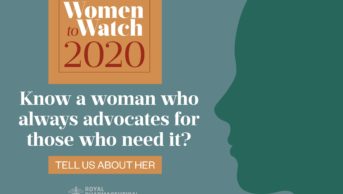
IKON
The national gender pay gap has been well publicised, with large companies forced to publish these figures, and women — quite rightly — campaigning for equal treatment in terms of the size of their pay packets. Less well known is the ethnicity pay gap — although there are signs that it is just as much of a problem.
British think tank, the Resolution Foundation, recently reported research which showed that black, Asian and minority ethnic (BAME) employees are losing out on £3.2bn per year in wages compared with white colleagues in the same role.
NHS workforce data from September show black men and women had lower mean monthly basic pay than white men (16%) and women (7%). In medicine, white consultants earn 3.5% more than black consultants, around 4.9% more than Asian doctors and 6.1% more than those of mixed heritage, with the largest disparity observed for black female medics (16%).
In 2018, The Pharmaceutical Journal revealed figures that indicated a statistically significant pay gap of 16% between white and BAME UK pharmacists for the first time. Responses to the survey showed a statistically significant, estimated median pro rata salary difference of £8,000, assuming a 40-hour working week (see Table).
| White pharmacists (n=859) | BAME pharmacists (n=217) | Total (n=1067) | P value | |
|---|---|---|---|---|
| Hourly rate in pounds (median, interquartile range) | 24.5 (20.7, 29.5) | 20.7 (16.9, 24.5) | 23.7 (19.7, 28.3) | 0.002 |
Source: The Pharmaceutical Journal Salary and Satisfaction Survey 2018. The survey was conducted between 16 July and 3 September 2018. Invitations were sent to all pharmacist members of the Royal Pharmaceutical Society. Statistical differences were analysed by the nonparametric Mann-Whitney test and were conducted by independent academic statisticians at the University of Aberdeen. Locum pharmacists were excluded from the analysis. The survey covered questions on pay and working conditions of pharmacists. | ||||
One possible explanation for this disparity could be that a large proportion of BAME respondents were younger than the white respondents and, perhaps, therefore less likely to be in senior positions. However, this would not fully account for the pay gap observed in the results, which reflect national data.
If an ethnicity pay gap exists, it is likely to have complex multifactorial reasons underpinning it; as such, greater transparency is needed to affect change. This article will look at five potential ways pharmacy in the UK can go from here. Box 2 provides guidance for pharmacists who feel they are being underpaid owing to discrimination.
1. Blinding CVs and increasing diversity on interview panels
The EU-funded GEMM (growth, equal opportunities, migration and markets) study showed discrimination to be an enduring problem within the UK after researchers applied to almost 3,200 jobs across different industries, with random variation in applicant ethnicity but with the same skills, education and work experience. It found that ethnic minorities were required to send 60% more applications in order to receive as many callbacks as the majority (non-BAME) group.
Taking part in the #PJMindTheGap Twitter chat held in December 2018 (see bottom of page for Box 1), Royal Pharmaceutical Society (RPS) English Pharmacy Board (EPB) member Aamer Safdar said people opt to hire those who look and sound like them. The result can be seen across careers with some groups having a “better prospect for promotion hence wider salary differential.” He added: “Seniority differences can occur because promotion opportunities for BAME [is] restricted by biased recruitment. This can be conscious or unconscious bias.”
With more than 40% of pharmacists on the General Pharmaceutical Council (GPhC) register identifying as belonging to a minority ethnic group, a look at how employers recruit candidates is important to determine how a diverse profession, such as pharmacy, could close any potential ethnicity pay gap.
Mahendra Patel, another member of the RPS EPB and professor at the University of Bradford, speaking in a personal capacity, said every organisation will have a diversity and inclusion policy in place, but whether anyone applies it is another matter. “Organisations need to ask themselves does this address the disparity between what people are saying at the ground level and what our policy says, and what steps have we got in place to address that?”
The Royal Liverpool and Broadgreen University Hospitals NHS Trust anonymises all job applications and provides unconscious bias training for staff involved in recruitment, according to Elaine Butchard, deputy director of workforce at the Trust. They are also encouraging and training more BAME staff to sit on recruitment panels. Butchard said: “We do recognise there is always more we need to do to monitor and reinforce this work. The Trust has a BAME Staff Focus Group that is active in supporting the Trust in identifying and addressing/mitigating practices that may be discriminatory in nature.”
Although blinded CVs and diversity on recruitment panels are touted as possible solutions to address unconscious bias, the evidence from other countries on whether this works has been mixed. While it signals that an employer is committed to fair hiring practices, it may simply delay discrimination until later in the recruitment process.
2. Publishing ethnicity pay data
The UK government is currently consulting on whether there should be mandatory reporting of ethnicity pay gaps for large organisations, as has been introduced for gender. In the consultation document, authors admit that improving diversity and inclusion will require “a concerted effort on the part of the government and employers to overcome structural, procedural and attitudinal barriers within society and individual organisations.”
Some employers are already preparing for this. A spokesperson for University College London Hospitals said more than 44% of its staff were from black and minority ethnic communities and: “Our workforce race equality standard specifies how we are focusing on specific actions to address inequality and inequity experienced by any of our staff. When the results of the government’s consultation are clear, we look forward to presenting data on ethnicity and pay in line with the expected national framework.”
Responding to the government consultation, the Pharmacists’ Defence Association has called for employers to be more transparent in how they report on the diversity of their workforce and “how they reward, manage and develop their employees as a catalyst for creating more diverse and inclusive workplaces.”
Ben Turner, human resources director for Well Pharmacy, says the company’s standard policies and procedures calculate pay for pharmacists purely on location and volume, within set bandings, which help to reduce unconscious bias. He adds, “Although we are currently limited in the data we collect on the ethnicity of our colleagues, our commitment to creating a workforce representative of our society is something we are committed to building on throughout 2019.”
A spokesperson for Boots stated that although they currently do not hold ethnicity data for staff, they will be looking at how these data are collected in future. Boots is also rolling out unconscious bias training to all employees and is looking to launch a BAME colleague group.
There have been calls for pharmacy leadership organisations to also report voluntarily on their ethnicity pay data. Robbie Turner, director of pharmacy and member experience at the RPS, said the Society was disappointed when it saw the results of the The Pharmaceutical Journal’s survey. “What is not right and we can’t allow to continue is the differential between what people get paid and between positions of responsibility and leadership.” He added: “There’s no easy one solution but the RPS is convening a group to look at inclusion and diversity as part of our work in 2019, and we want to hear from the profession and people in other areas of healthcare and the wider society to explore what can be done to address this. This isn’t right and we need to address it.”
At the time of publication, The Pharmaceutical Journal was still awaiting comment from other pharmacy organisations.
3. Increasing visibility of role models
Representation was raised as another important issue during the Twitter debate. More than one respondent pointed out the noticeable dearth of black pharmacy leaders within the RPS and other pharmacy boards, as well as at the highest levels in pharmacy schools.
Statistics collated by HE Advance, a charity supporting strategic change and continuous improvement in higher education, found that just 0.61% of all professors in the UK are of black ethnicity, with even fewer being of black ethnicity and female.
The Pharmaceutical Journal has asked several pharmacy organisations for any information they had on this, but could not find data. However, it should be noted that, within the NHS as a whole, this is already a recognised problem.
Roger Kline’s landmark report ‘The “snowy white peaks” of the NHS: a survey of discrimination in governance and leadership and the potential impact on patient care in London and England’, published in 2014, found a “very significant gap” in the ethnic and gender diversity of NHS trust boards and national NHS bodies, compared with the rest of the workforce and the local population to whom services are provided.
Lisa Boateng, lead antimicrobial pharmacist at Barts Health NHS Trust, was among those in the Twitter debate calling for more BAME role models in pharmacy, especially black members sitting on pharmacy boards. “Role models have so much power, from parents to teachers and even our favourite superhero.” She explained, the response to the film Black Panther is one example of powerful media influence. Being able to see black pharmacists in high-power, high-visibility roles might encourage more young, black pharmacists to push for senior positions.
Patel believes there is a significant problem with pharmacists from BAME backgrounds not applying for more senior roles. “It is about having a culture of confidence. We need to ensure everyone has an equal chance,” he says. “We need to reach out to people. If people don’t apply for senior positions the pay gap will continue to be there.”
4. Better support for the future of pharmacy
In 2018, a paper presented to the GPhC revealed marked differences in performance in preregistration examinations among candidates from different ethnic backgrounds, suggesting an unfair playing field.
In 2017, the pass rate was 94% for white candidates and 90% for Chinese candidates. However, this dropped to 72% for Pakistani candidates and 66% for black candidates. A previous report from the GPhC had pointed to several potential reasons for the figures, including feelings of isolation and exclusion during their studies. The research had also highlighted some bias and prejudice against black African students — particularly if they had undertaken their secondary education overseas. It found that “bias, whether overt or implied, was perceived to lead some trainers to have lower expectations of black African students; to adversely affect the preregistration placements students either applied for or were offered; and to undermine some black African students’ ability to learn, develop and reach their full potential.”
It also raised the issue of representation, pointing to “a perceived lack of black African role models within the pharmacist education and training pathway to guide, inspire and motivate students of a similar background”.
The GPhC has tasked pharmacy schools to be more “proactive” on equality and diversity by implementing initiatives with the purpose of breaking down cultural barriers. Examples include orientation for overseas students, buddy or mentoring systems, additional language or IT support, random allocation to study groups and fostering online student communities.
“As a student, knowing that you are already more likely to fail [the preregistration exam] than your counterparts on the basis of being black alone is something which is more than worrying,” said one respondent in the Twitter conversation.
Noma Al-Ahmed, managing director at ProPharmace, also tweeted: “There are clear gaps in support for early year pharmacists, support with career progression is essential at the start of their career and this will have a direct impact on the ethnicity pay gap.”
Use of the Oriel recruitment system for pharmacy training has been cited by some as making the system more equitable.
Katie Maddock, interim head of pharmacy at Keele University, said they had a very diverse student population. The university was very concerned about unconscious bias and had set up mandatory training for all staff who are involved in interviewing. “As a school we are also consequently aware of the need for BAME role modelling within our staff base, but this is something that takes time to work on.”
However, a Freedom of Information request answered by 20 pharmacy schools shows that none provide any specific support to black students taking the MPharm. Only two said that they had programmes to increase BAME achievement in particular: De Montfort and Bradford. A spokesperson from De Montfort University said: “The MPharm degree is part of De Montfort University’s ‘freedom to achieve’ intervention, which is focussed on enhancing BAME student achievement (not black student achievement in isolation). The support offered is available to all students regardless of ethnicity.”
5. Creating a unified voice
BAME doctors have incredibly politically active groups, including the British International Doctors’ Association and British Association of Physicians of Indian Origin.
There is a national BAME Pharmacy Leadership Network, but Elsy Gomez Campos, l ead pharmacist for specialised clinical commissioning at NHS England, argues that an official association is needed for BAME individuals working in pharmacy.
She highlights data from the GPhC which show BAME pharmacy professionals are more often the subject of concerns raised with the regulator, yet fitness-to-practise panels do not reflect the diversity of the profession.
In order to fight discrimination, BAME pharmacists need an independent voice, she says. Many pharmacists who have felt they have been treated unfairly at work are scared to speak out and that is why there needs to be an organisation to provide that voice. “No one is talking about this, we don’t have the opportunities and it is not being recognised.” There is a BAME pharmacy network on Twitter to help promote leadership and career progression but that is not enough she says. “We have recently put together a Telegram instant messaging group and we are doing work around what sort of resources and information are needed,” she says. “It allows us to help each other.”
How do you feel that pharmacy can tackle the ethnicity pay gap? Have you experienced discrimination yourself? We want to hear your ideas and build a campaign for change. Email angela.kam@rpharms.com or tweet using the #PJMindtheGap hashtag.
Box 1: Comments from Twitter chat
I don’t think the data are conclusive but they highlight a real problem related to the bigger issue of Equality and fairness around opportunities available to BAME and recruitment bias as well #PJMindTheGap
— Elsy Gomez Campos (@elsygomezcampos) December 12, 2018
It’s a complex situation. I’m thinking about bias in recruitment where people recruit mini-me’s who are look alike, sound alike. Better prospects for promotion hence wider salary differential. #PJMindTheGap
— Aamer Safdar (@asafdar1) December 12, 2018
I just mentioned the same approach re #RooneyRule
The oriel approach is a great way to mitigate against recruiters bias at the interview stage @FlemingGm
#PJMindTheGap— Mohammed Hussain (@DigitalPhamcist) December 12, 2018
We saw record numbers of Kingston students get Hospital preregs this year thanks to Oriel #PJMindTheGap
— Sébastien Bailey (@SebastienPharma) December 12, 2018
A5 c #PJMindTheGap there is clear correlation between gender pay gap, and ethnicity pay gap, more #BAME individuals need to be seen in senior leadership roles as role models in order to close the gap
— Noma Al-Ahmad (@NomaPropharmace) December 12, 2018
Important we harness how role models influence and help to shape all #pharmacy professionals irrespective of career stage #PJMindTheGap That said for #BAME representation #pharmacy [is not the] only healthcare profession with work to do but what about if we do it first & best!
— Ade Williams (@adewilliamsnhs) December 12, 2018
Role models are always good, but we need more than that. Ethnicity issues (career + heathcare) need to become more mainstream discussion issues. Have you ever been to an LPF/RPS Local meeting where ethnicity issues were a topic? #PJMindTheGap
— NAWP (@NAWP_UK) December 12, 2018
Box 2: What to do if you feel you are underpaid
If you feel you are not being paid fairly because of your ethnicity, or for any other reason, you can seek advice from the sources below:
- The Royal Pharmaceutical Society Professional Support Service: 020 7572 2737. This is a confidential advice service that you can contact as part of your membership;
- Acas provides information, advice, training, conciliation and other services for employers and employees to help prevent or resolve workplace problems: www.acas.org.uk/recruitment;
- How to ask for a pay rise. Pharm J 2018;301(7915):54–56. doi: 10.1211/PJ.2018.20205102



